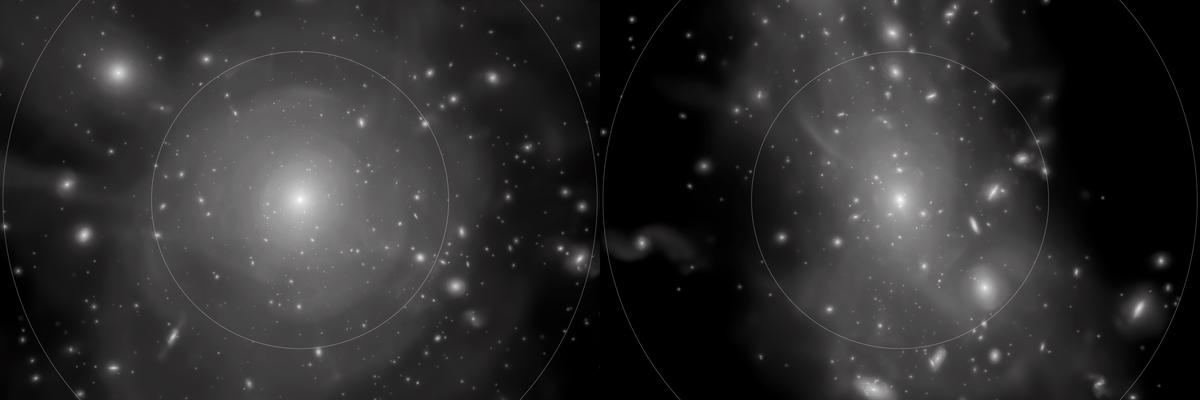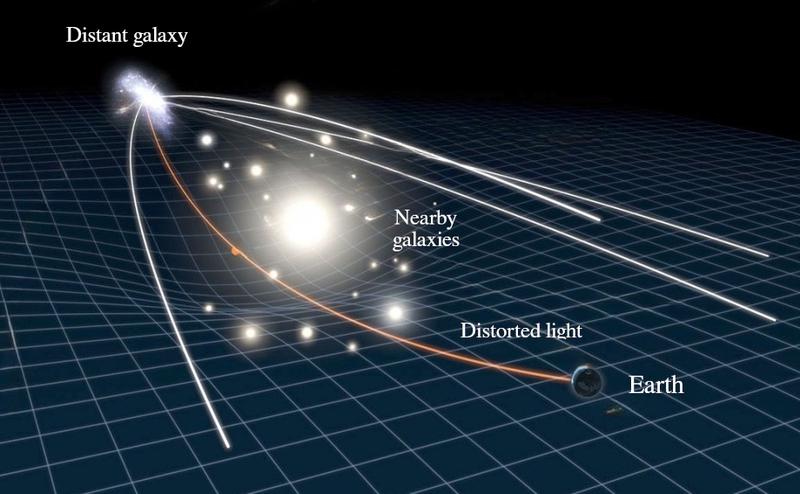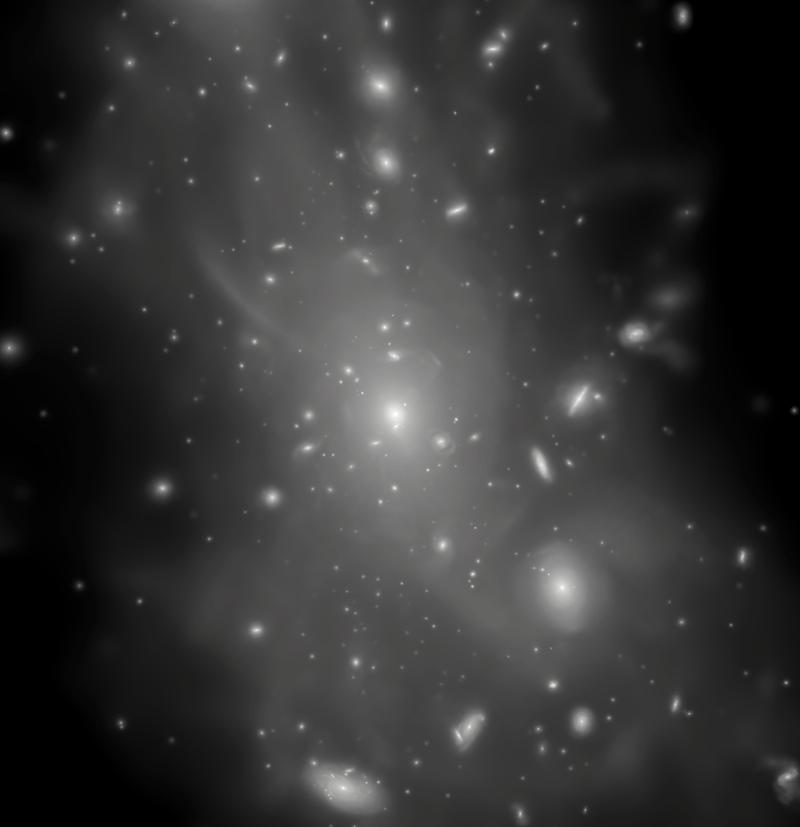Highlight
New understanding on the relationship between galaxies and dark matter solves mysterious problem in cosmology
March 10, 2023
- Recent studies have revealed that the bending of light around massive galaxies is significantly smaller relative to theoretical expectations. This finding has been interpreted as a breakdown of our cosmological model.
- Now, a team of scientists from Spanish institutions has found that the mismatch between theory and observations is actually caused by imprecise modeling of astrophysical processes. Their findings were published today in the Monthly Notices of the Royal Astronomical Society journal.
- Jonás Chaves-Montero, postdoctoral researcher at the Institut de Física d’Altes Energies (IFAE), is the lead author of the study.

Cosmology is a branch of astronomy that studies the properties of the universe as a whole. One of its major discoveries is that dark matter and dark energy make up about 95% of the universe. However, despite their large abundance, dark matter and dark energy still remain among the biggest mysteries in science. To learn about these components, the so-called dark side of the universe, cosmologists measure the bending of light around galaxies. This phenomenon is known as gravitational lensing, and it is caused by the gravitational pull of these galaxies and the dark matter that surrounds them.
On the other hand, astrophysics focuses on the properties of celestial objects like planets, stars, and galaxies. For a long time, it was thought that astrophysics did not play a big role in cosmology because dark matter and dark energy cannot be directly observed. However, this team has found that the relationship between galaxies and dark matter has a greater dependence on galaxy properties than what was previously understood.

The researchers arrived at this conclusion by analyzing highly-detailed computer simulations that imitate the distribution of dark matter and galaxies in the universe. They found that the bending of light around simulated galaxies is smaller than what the standard theory predict, analogously to what is found for actual galaxies. Remarkably, they found that this tension disappeared when accounting for astrophysical effects in the relationship between galaxies and dark matter.
“In the past, cosmology and astrophysics were seen as two separate disciplines; however, our study has challenged this idea. This sends us back to the drawing board and forces us to include astrophysical effects in our models. Only in this way we will gain deeper insights into dark side of the universe,” says Jonás Chaves-Montero, a researcher at the Institut de Física d’Altes Energies (IFAE) and lead author of the study.

This study was designed by researchers Jonás Chaves-Montero, Raúl Angulo, and Sergio Contreras while they were at Donostia International Physics Center (DIPC), and the analysis was conducted using the DIPC Supercomputing Center. Currently, Jonás Chaves-Montero is affiliated with the Institut de Física d’Altes Energies (IFAE).
- IFAE Research group
- Observational Cosmology Group
- Contact
